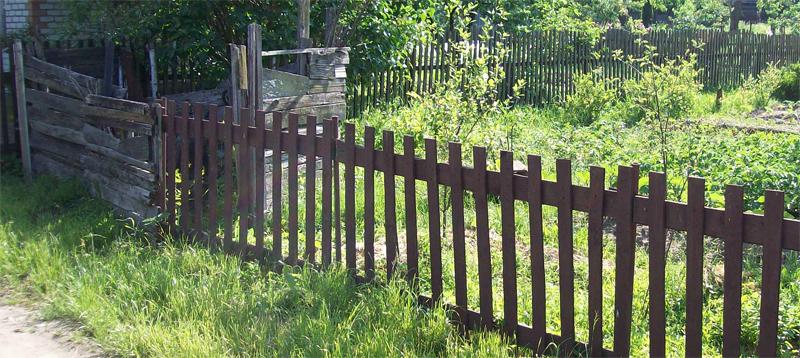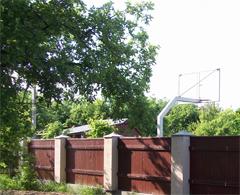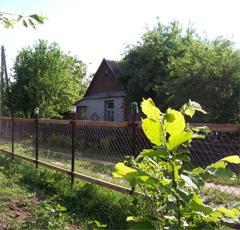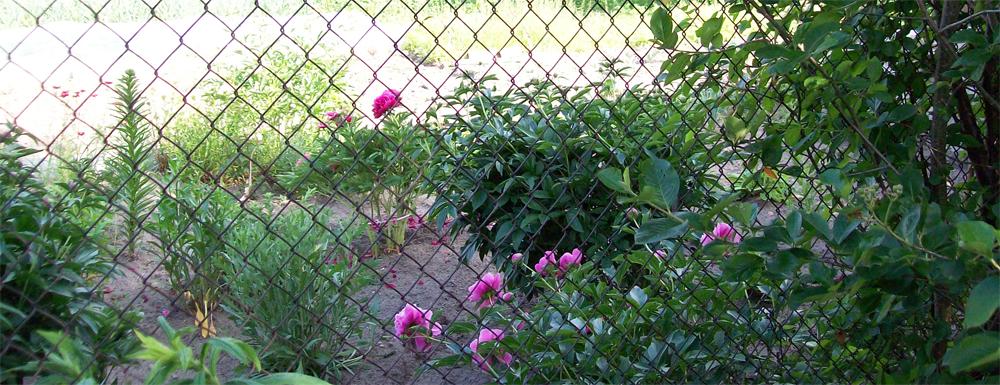Ways to save money on fences and enclosures without sacrificing quality.

Saving Money When Building Fences and Enclosures
 Both before the crisis, during it, and after, there has been widespread demand across Russia for economical fences — inexpensive, but not necessarily of poor quality. A simple example that performs its functions excellently and is quite aesthetic is the cheap chain-link or wooden fence.
Both before the crisis, during it, and after, there has been widespread demand across Russia for economical fences — inexpensive, but not necessarily of poor quality. A simple example that performs its functions excellently and is quite aesthetic is the cheap chain-link or wooden fence.
A wooden economical fence is especially suitable for lovers of natural and eco-friendly materials. Although it is not as long-lasting, it is cheap, easy to build, and the materials are readily available. If such a fence is treated, it will last many times longer. Moreover, not every species requires antiseptic treatment. Some contain a sufficient amount of natural antiseptic — resins. If antiseptic treatment is required but you postpone it for some reason, you will not be able to treat the joints of the boards later; rot and mould will take hold there. Since picket-fence decay begins at the bottom, from the ground, you should make a plinth of concrete, brick, or stone between the posts. One of the cheapest metal fence options is a chain-link fence. The degree of cheapness depends on the wire thickness, mesh size, roll width, and steel grade. The same applies to welded fences. In addition, it is resistant to weather influences and requires no maintenance. Welding will make the structure more durable without greatly increasing the cost. Very cheap small black non-galvanized meshes are not intended for long service, but such metal fences have nevertheless become widespread here.
 "Transparency" is another advantage of mesh fences. It can also help protect against thieves from neighboring plots, because neighbors often notice them through the chain-link.
Corrugated metal panels (profiled sheeting), decorative concrete fences with brick, are also available and attractive. For the concrete option, it is important not to make it too tall if you want to save money — an excessive height spoils the appearance and makes the plot darker.
"Transparency" is another advantage of mesh fences. It can also help protect against thieves from neighboring plots, because neighbors often notice them through the chain-link.
Corrugated metal panels (profiled sheeting), decorative concrete fences with brick, are also available and attractive. For the concrete option, it is important not to make it too tall if you want to save money — an excessive height spoils the appearance and makes the plot darker.
Finally, a natural fencing option is a living hedge. Such hedges can be very beautiful, bloom, smell, and even bear fruit, and often serve as a more difficult obstacle to overcome than many man-made fences. A "mature" living hedge reaches 2–3 m. Suitable plants include hawthorn, viburnum, some species of barberry and jasmine, honeysuckle, tall species of dog-rose, hazel, willow, decorative-leaved cornel, spruce and thuja. The last two grow slowly. A living hedge becomes even more decorative and attractive when different shrub varieties are combined. A combined fence can save money in its own way. For example, from the street side — brick pillars with corrugated metal panels between them; from the road and neighbors — corrugated panels on used metal pipes; and where there is a vegetable garden, use chain-link mesh. Even rusty pipes will do if painted with restructuring FeraNik — then they look like new.
Building a garage can also reduce the cost of the fence if the garage replaces a large part of the fence. It will last much longer than the same wooden fence, and a cottage usually needs a garage anyway. Such an "external" garage also increases security: it is harder to overcome than a fence. Sliding gates can reduce the length of the fence and thus lower its cost. An additional advantage of sliding gates is that they increase maneuvering space compared with gates that open inward and, unlike those that open outward, do not block the roadway.
Even noise barriers that are absolutely necessary around houses located very close to a railway, noisy highway, or some enterprise — made of sound-absorbing panels — may not be so expensive and can be economical in a way. You only need to find where sound-absorbing panels are sold at low prices, and then you can install noise barriers without spending a lot of money. Such enclosures as noise barriers will bring you incomparable benefits and will serve for many years, which is an extremely advantageous and optimal quality.
When choosing your economical option, include its durability in your calculations. Sometimes durability also depends on additional treatment of the material. For example, for a picket fence you should round or trim the top parts of the boards at an angle so that water does not linger on the end grain. An oblique cut is worse: the end-grain area increases, the wood gets wetter, and consequently the service life is reduced.
